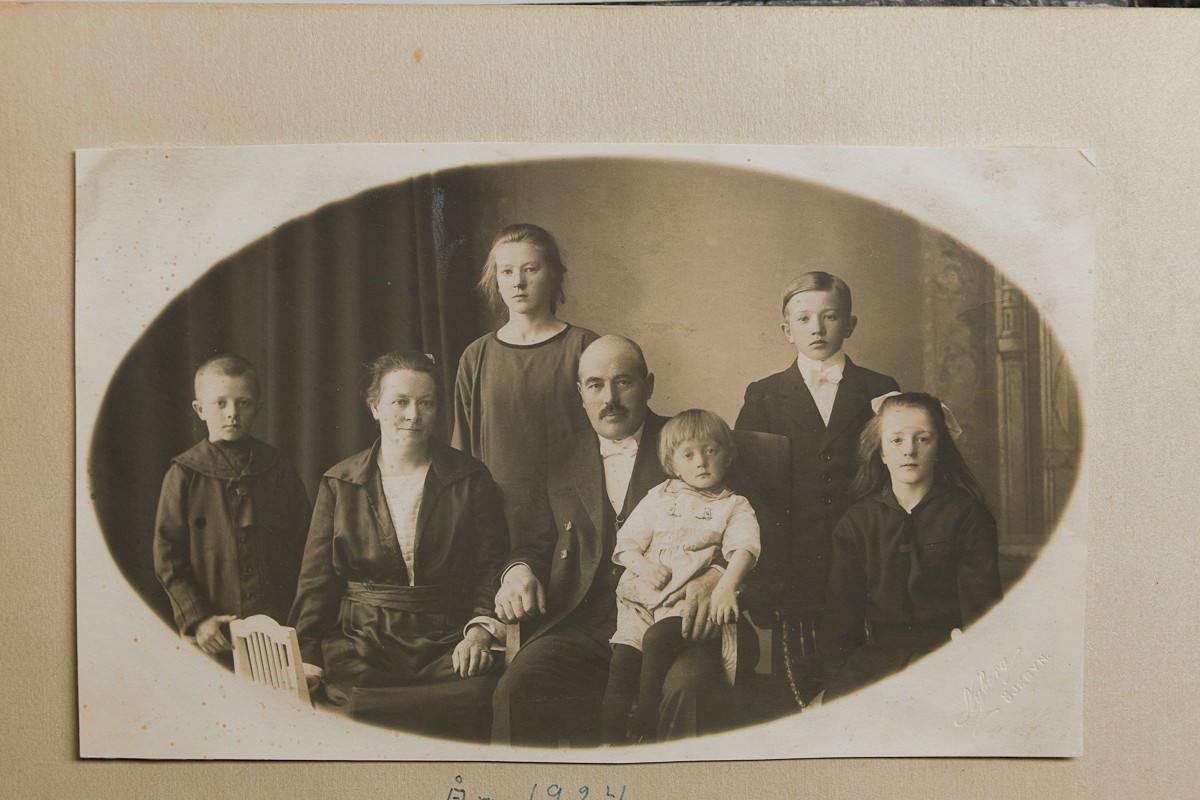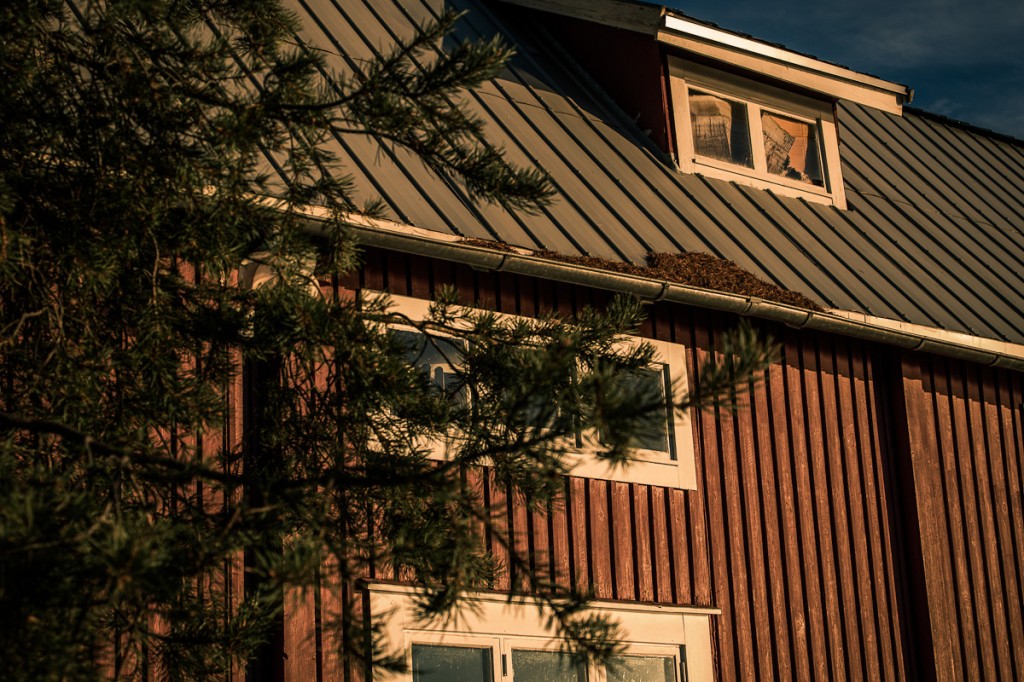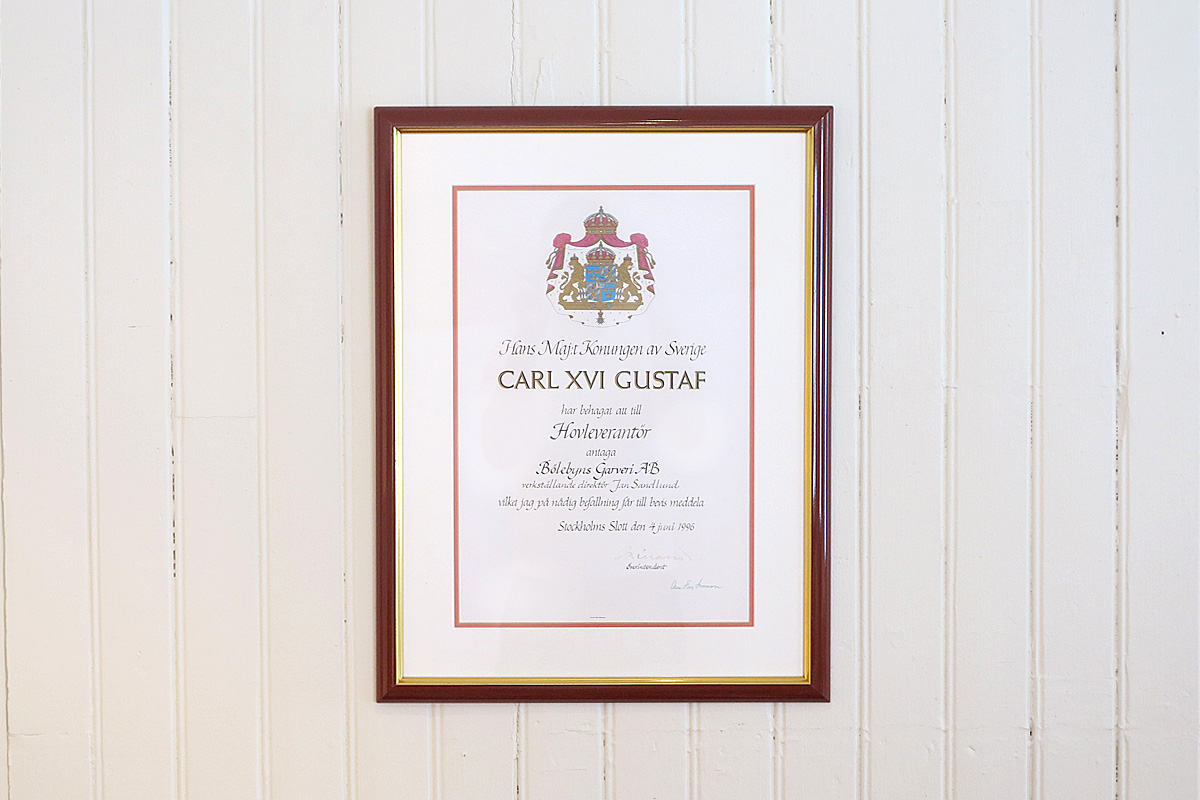-
 1899
1899It begins. Oskar Sandlund starts his very own tannery.
-
 1907
1907A tanning mecca. Conditions in the Piteå district are ideal for tanneries. Plenty of raw materials to be had in a flourishing farming community with a big demand for utility goods such as gloves, traditional peaked shoes and harnesses.
-
 1918
1918Good times. Oskar invests in a new tannery (this one) on the banks of the Pite river. The water in the tanning vats has not been replaced since. Operations are focused on tanning leather for the local traditional peaked footwear. This is a big industry, the Piteå district alone contains some ten bark tanneries.
-
 1920
1920The Star Cinema. Aunt Karin (married name Lindquist), sister to Bengt, Assar and Hilding plays the piano wearing a mink stole to the silent films shown at the Star Cinema that lies on the opposite side of the road from the tannery.
-
 1928
1928Emigration. Iris and Ruth emigrate to America.
-
 1931
1931Jokkmokk Market. Böle participate at the Jokkmokk Winter Market for the first time. A lively trading centre and an event, which has been held here for centuries. The company would participate at the market for 80 years in succession with Assar holding a personal record of 62 consecutive years, a year more than “Sausage Seller Inga”. When the temperature sinks down to around minus 40ᵒ C it is best to trade as quickly as possible.
-
 1931
1931The Sausage Seller Inga. Legendary hotdogs for sale.
-
 1935
1935Roknäs IF. Assar is a skilful and feared defender with Roknäs football club. Begins to date Siri Viklund and works in the tannery with his father.
-
 1941
1941The Blockade. During the war years the tannery goes very well. Bengt, who is in charge and the sawmill owner, are the only people in the village to pay war profits tax. There is a shortage of leather and other goods owing to the blockade.
-
 1946
1946Family life. The family increases in size with Jan, the third generation. Assar takes the opportunity to push the pram around the scenic paths that surround the tannery.
-
 1949
1949Hard times. Assar takes over the tannery in difficult conditions. The Farmer’s Association (ung.) launch a rubber boot that almost eradicates the traditional peaked footwear. Many tanneries go broke or turn to industrial tanning using chemicals. Assar insists on keeping up traditions and tanning leather with spruce bark and water. Assar takes an extra job as a swimming teacher.
-
 1953
1953Duke. The Sandlunds move to a new house beside the tannery. Agneta and Duke, the latter a car are new additions to the family. Jan, age 7, falls into tannery vat number 13.
-
 1955
1955New opportunities. Five craftsmen sit and make peaked shoes, but times are still hard. Assar tries to find new products and ways through which to survive. The company succeeds in bringing home a big order for sheepskin seats for government company Vattenfall’s Volvo estate cars. New trade fairs such as ExpoNorr start up and become an important part of business operations.
-
 1961
1961The shop. The demand for consumer products increases. The Böle bag, now a classic is launched alongside several ladies’ backpack models. Tourism increases as more people own cars, the shop in Böle booms, as many people begin to become interested in Böle’s special craftsmanship and in Böle itself as an interesting place to visit.
-
 1964
1964Sunday outings. The family frequently take a trip into the country, up a nearby mountain or to the river rapids. They light a fire, make coffee on a primus stove, fry up some bacon to go with their picnic from the haversack.
-
 1966
1966Charter. Summer sales have been high this year and Siri & Assar are off on their first charter holiday.
-
 1974
1974Winter in Böle. When it was quiet in the shop, what better to enjoy the surroundings.
-
 1977
1977Medial attention. The company and its much discussed and very special operations are featured frequently in the media.
-
 1978
1978Voluntary work. Jan & Inger goes to Bangladesh to work for two years as volunteers. Mother Siri is worried.
-
 1981
1981Prime time. TV-feature about Böle on SVT Saturday evening at 9 p.m. (Half Sweden watches) Play movie here ( The link opens in a new window).
-
 1987
1987Briefcases. The third generation takes over and new products are developed, including briefcases. David, in full winter clothing, falls into vat number 4. Assar starts to take things easier.
-
 1991
1991Minister ‘s briefcase. The famous Minister’s briefcase is developed. Number 1 goes to the Minister for Trade at that time, Anders Sundström.
-
 1996
1996Royal Purveyor. The company is given the title of Purveyor to His Majesty the King and makes picture frames for the Royal Portrait presented on states visits. Böle have made a number of products for the Swedish royal family over the years.
-
 2000
2000Stockholm. The company opens a store in Stockholm and high quality and classic craftsmanship attracts many new customers.
-
 2007
2007Flagship Store. The Böle store is renovated. The fragrance of spruce bark still permeates the walls.
-
 2012
2012Harrods. Böle launches the Bespoke selection at Harrods Exclusive. Anders Sandlund enters the family business.
-
 2014
2014Expansion. We are thinking of adding some more retailers outside Northern Botnia.